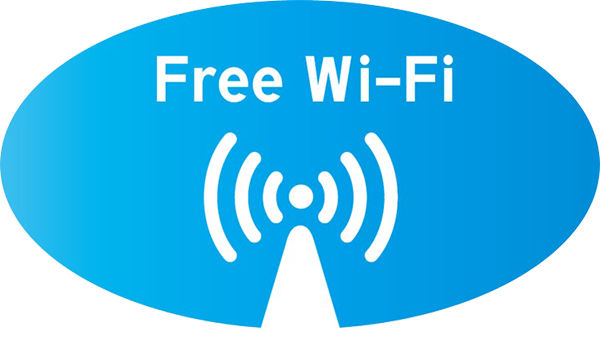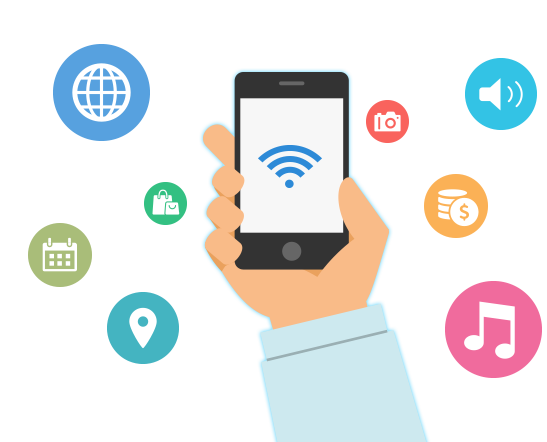Unveiling the Magic of Clash Royale: A Fresh Take on Mobile Gaming!
Is There a Vacuum of Casual Games for Female in South Korea? Cookie Run Is Next Only to Lineage, Ranking No.3 in Revenue
Insuring Your Peace of Mind: An Overview of Common Types of Insurance.
Launched 3 years ago, "Pokemon Go" is still going strong!
How to Download and Install VIX for Free?
How Could Fall Guys Continue Its Success after Selling More than 11 Million Copies on Steam?
Just imagine such a situation: you need to connect to some wireless network to complete a project, download a file, or track some information, but you are not at home or in your office, or even you are traveling in an unfamiliar city. There is an urgent need for free Wi-Fi networks, but you don’t know where it is. Unless you have a project network like Google, mobile operator’s Wi-Fi, rather than a mobile data, then you have to find free Wi-Fi hotspots.

But fortunately, whether you are at home or halfway around the world, there are some easy ways to find Wi-Fi access. Nowadays, free Wi-Fi is covered all around the city, and you can find free but safe Wi-Fi in the public. With free public Wi-Fi, you can enjoy the Internet and do whatever you want by using the free Wi-Fi that protects your privacy.
But where to find free Wi-Fi networks?
There may be plenty of free Wi-Fi networks around you and you don’t know, such as workshops, living places, and commuting places. Many companies, including some favorite destinations like Starbucks, McDonald's, KFC, Apple Stores, and FedEx provide free Wi-Fi. If you have been looking for a Wi-Fi network after you get off work, you may also know that the Metropolitan Transportation Authority of New York has equipped buses and subways with free Wi-Fi long before.
In recent years, parks and other public places are increasingly equipped with free Wi-Fi hotspots. Many airports, train stations and bus stations provide free Wi-Fi access. So do some university campuses, public libraries, museums and cultural attractions. Wherever you are, you can take advantage of free Wi-Fi hotspots provided by the Internet or cable TV provider. In many cases, you can search your network provider’s website or hotspots or mobile applications near the map. You can also check the specific network providers on the Internet to find out where they provide wired and wireless networks and where to get a free internet access.
Another useful way is to download an App, which will help you find free internet when you leave home. You’d better download the App WifiMapper, a helper that can get you reliable wireless networks near you when traveling outside. WifiMapper claims to provide the world’s largest database of Wi-Fi networks, with nearly 5 million Wi-Fi networks and more than 2 million free recommendations worldwide hotspot. The App, available for download on both iOS and Android, can tell you where you can connect to Wi-Fi networks, and whether it is safe and free.
How do you protect yourself when using free Wi-Fi online?
It’s a good start to ensure that the website you are using is safe. But in addition to ensuring that your traffic is encrypted as much as possible through HTTPS and SSL, you should also use a virtual private network (VPN), which enables you to use a secure private network. If you’re used to free Wi-Fi, you can configure the VPN to join the Wi-Fi network. When the website you are using is not completely encrypted, it may even threaten you. To better protect your privacy and security, you’d better look for a VPN service instead of a proxy service, which can disguise the identity of the device.

There are also some settings you should change before connecting. By doing so, you can prevent your smartphone or memory from automatically joining the public network. It’s a good idea worth trying. It is also very important to ensure that all your accounts are set up with a password manager. You need to change your repeated or insecure passwords and start a two-factor authentication system. Some people may regard it as an unnecessary trouble, but it can indeed play a role in safety protection. Besides, it is recommended to take preventive measures, such as turning off sharing and turning on your laptop's firewall. Other precautions should be taken, including turning off the device’s Wi-Fi when you are not using it.
When you're using a free Wi-Fi network, you're taking on more risks. If you are dealing with some sensitive information, such as your bank details, credit card information, or financial information, then you can only connect to a secure network at home or in office. As long as you confirm that the free Wi-Fi network you're connecting to is secure and reliable, you can try it, which can serve as a shortcut for you.

PayPal Q3 transactions hit record total: $247 billion

Supercell‘s sixth mobile game "Rush Wars" is now in beta

Is There a Vacuum of Casual Games for Female in South Korea? Cookie Run Is Next Only to Lineage, Ranking No.3 in Revenue

Top 10 Game Developers of 2020 (I)